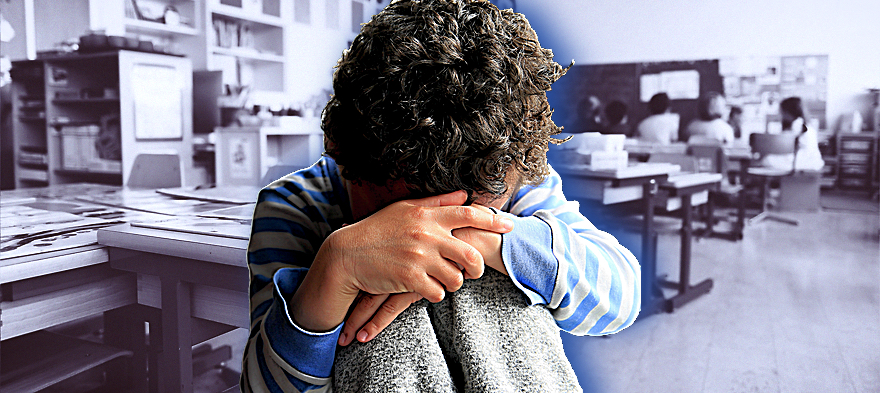
Oct 27, 2020 12:00:00 AM
Much of the public discussion about pandemic education has focused on two major questions: How are families handling remote learning? What does safe reopening of school buildings look like?
Recently, Bellwether Education released a report addressing the elephant in the room during these conversations: Has the pandemic’s effect on school pushed students out of education altogether? According to “Missing in the Margins,” we could be looking at 3 million students gone missing from school.
Bellwether’s analysts have done their best to count numbers of the “most marginalized” students—those at highest risk for learning loss and potentially complete disengagement from school. These are students who lack stable housing, are in foster care, have Individualized Education Plans that qualify them for special education services, or are learning English. According to Bellwether’s estimates, there are 12 million of these students across the U.S.
Not all of them will lose touch with schools. But historical trends on diploma completion, plus attendance data from last spring’s remote learning, virtually guarantee some number of them will. How many? That’s the essential question.
As the researchers note, [pullquote]if even one in 20 of those students permanently loses contact with school, we’re talking about a total number of students that would suddenly become the second-largest school district in the United States[/pullquote], surpassing Chicago and Los Angeles.
Their own best attempts to narrow the field to those most likely to be fully disengaged leaves us with the same number of missing students as the entire K-12 public enrollment of the state of Florida.
Historically, public schools and governments have talked about students who don’t complete in ways that put the onus on the student, not the system. We talk about “school dropouts” and “dropout rates.” But even before the pandemic, students who did not complete K-12 education were far more likely to be failed by the system as pushouts rather than to have walked away of their own accord.
Given the usual framing of students who don’t complete 12th grade as “dropouts” rather than young people whom educational systems have marginalized and ignored, our strategies to reconnect with them have also usually been off-the-radar and under-resourced. The funding of “dropout recovery” programs has tended to wax and wane at the whims of policymakers’ short attention spans.
It has only been in recent years that policymakers are reframing the conversation to talk about “disconnected youth” or “opportunity youth” when referring to young people (ages 16-24) who are neither working nor in school. There are already 4.5 million young people in this position across the country. If Bellwether’s estimates are correct, the pandemic could spark a massive uptick over multiple years in the numbers of young people disconnected from both work and school.
If there’s one possible upside to this pandemic, it offers us the opportunity to reframe the dropout issue away from punishing students and toward improving systems and creating pathways that keep all students on track to reach their full potential. Already, some outstanding local efforts to keep kids connected to schools during the pandemic, such as the work at Chicago’s Curie High School last spring, have made a difference.
But capturing the attention of district and state-level policymakers right now is a tremendous challenge. [pullquote]The Bellwether report is intended to sound a clarion call that cuts through the noise policymakers currently face over pandemic politics.[/pullquote] The report should help them focus on the fact that millions of young people could permanently lose their chance at a high school diploma and all that comes with it—including postsecondary education and work opportunities.
Now that the elephant in the room has been named, how do we get our arms around it? Districts and states need to collect accurate, real-time attendance data. Schools and community partners can use that data to identify students most in need of support and reach out to them and their families in a coordinated, collaborative manner. Despite the economic impact of the pandemic, more resources must be deployed. As the authors note, “Expecting schools and other public and nonprofit service agencies to do more with less could leave vulnerable students worse off than they already are.”
Maureen Kelleher is Editorial Director at Future Ed. She was formerly Editorial Partner at Ed Post and is a veteran education reporter, a former high school English teacher, and also the proud mom of an elementary student in Chicago Public Schools. Her work has been published across the education world, from Education Week to the Center for American Progress. Between 1998 and 2006 she was an associate editor at Catalyst Chicago, the go-to magazine covering Chicago’s public schools. There, her reporting won awards from the Annie E. Casey Foundation, the International Reading Association and the Society for Professional Journalists.
The story you tell yourself about your own math ability tends to become true. This isn’t some Oprah aphorism about attracting what you want from the universe. Well, I guess it kind of is, but...
If you have a child with disabilities, you’re not alone: According to the latest data, over 7 million American schoolchildren — 14% of all students ages 3-21 — are classified as eligible for special...
The fight for educational equity has never been just about schools. The real North Star for this work is providing opportunities for each child to thrive into adulthood. This means that our advocacy...
Your donations support the voices who challenge decision makers to provide the learning opportunities all children need to thrive.
Ed Post is the flagship website platform of brightbeam, a 501(c3) network of education activists and influencers demanding a better education and a brighter future for every child.
© 2020–2024 brightbeam. All rights reserved.
Leave a Comment